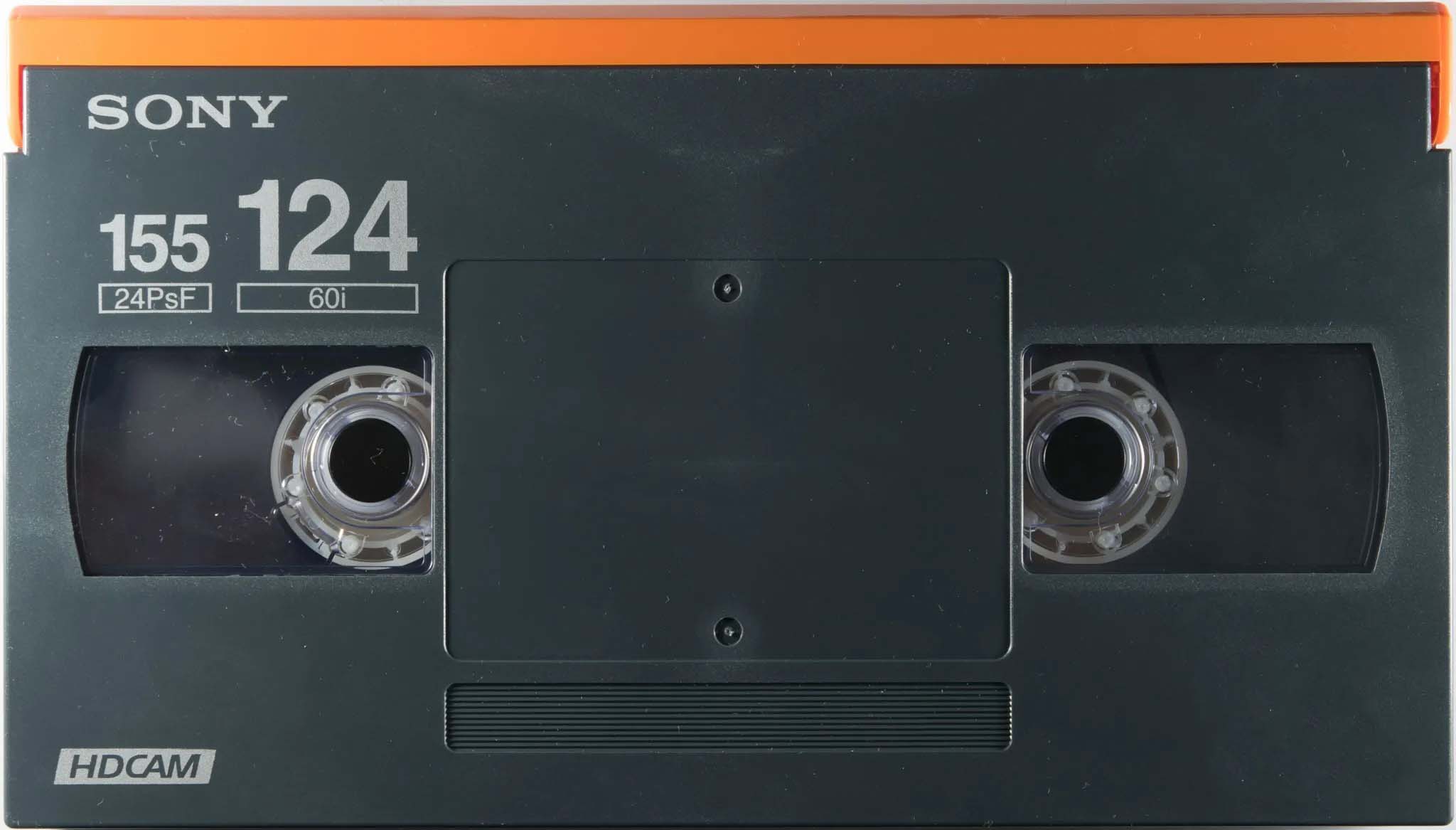Sony is one of the biggest names in video technology—and they have been pioneers in the industry for as long as the industry has existed. This means they have a lot of different products, and differentiating between them can get pretty confusing.
HDCAM, for example, is a HD and digital variant of Betacam, which is itself a progression of the famous Betamax format. In this post, we cover everything you need to know to identify, store, and digitize HDCAM tapes.
WHAT IS HDCAM?
HDCAM is the digital variant of Betacam, a high-quality videotape technology made by Sony in 1997. It was used by both consumers and professionals but was particularly popular in the television industry. It went into disuse in 2006 when recording equipment no longer required tapes.
As its name suggests, HDCAM produced high-resolution video, but an even higher-quality version was released in 2003 called HDCAM SR (Superior Resolution). It had increased bitrate and used MPEG-4 Part 2 Studio Profile for compression, making it popular for HDTV television production in the early 2000s.
WHEN WAS HDCAM INVENTED?
HDCAM went on sale in 1997, around four years after the first digital product in the Betacam lineup (Digital Betacam). It was used in television for a long time, both for recording new footage and later for storing older footage.
It was used for so long, in fact, that Sony only stopped selling HDCAM and other digital Betacam products in March 2023.
IS HDCAM GOOD QUALITY?
HDCAM could produce very high-quality footage and was even a member of the CineAlta family (a range of products aimed at the cinema industry). It was well-suited to both television and cinema recording because it offered multiple frame rate options: 23.98p, 24p, 25p, 30p, and interlaced frame rates of 50i and 59.94i.
It uses 3:1:1 color sampling and records a 7:1 compressed signal to the tape at 135 MB per second. While HDCAM was outdone by the products that came after it, it definitely provided high-quality footage for the time.
WHAT IS THE RESOLUTION OF HDCAM SR?
HDCAM SR increased the resolution from HDCAM’s 1440×1080 to 1920×1080 pixels.
WHAT WAS HDCAM USED FOR?
HDCAM was used widely in broadcasting, not least because it produced great footage with film-like image quality. It also offered useful progressive modes, internal conversions, and recording modes that made achieving great results easy for broadcasting crews.
Before digital file sharing became quick and standard practice, it was also much more convenient to store and share footage using HDCAM videocassettes, so they were used throughout the production process.
HOW SHOULD YOU STORE HDCAM?
If stored well, HDCAM tapes can last for around 30 years, so the first tapes produced in 1997 will be nearing the end of their life over the next few years.
The tape has protection built into it—such as antioxidant layers on the internal tape—to prevent it from shrinking over time. Some cassettes are also coated in anti-static resins to prevent dust build-up.
For standard storage, your room should have a humidity level between 30% and 40% and a temperature between 59 and 73 degrees Fahrenheit. For long-term storage over 10 years, you need a little less humidity and heat. Ideal conditions would be around 30% humidity and between 54 and 59 degrees Fahrenheit (12 to 15 degrees Celsius).
HOW DO I IDENTIFY HDCAM TAPES?
Videotapes from the Betacam lineup all look very similar, so you might not know which you have at first glance. They are color-coordinated, however, so you can check which is which by looking at the lid.
HDCAM tapes are black with an orange lid, and HDCAM SR have cyan lids. The S-size tapes (up to 40 minutes runtime) had dimensions of 15.6 cm x 9.6 cm x 2.5 cm. The L-size tapes (up to 124 minutes runtime) were a bit bigger at 25.4 cm x 14.5 cm x 2.5 cm.
If you’re in doubt, the lid should also have “HDCAM” or “HDCAM SR” written on it.
HOW TO DIGITIZE HDCAM
Depending on when your HDCAMs were produced, they may not last much longer, so it’s a good time to start thinking about preserving the footage on them. At EverPresent, we can digitize any kind of Betacam or HDCAM tape and transfer it onto a USB flash drive, DVD, or cloud storage for you.
We’ll make sure the files are labeled and organized—and we can also organize your original collection if you want us to. No project is too small or too big, so if you have tapes you want to digitize, give us a call!




